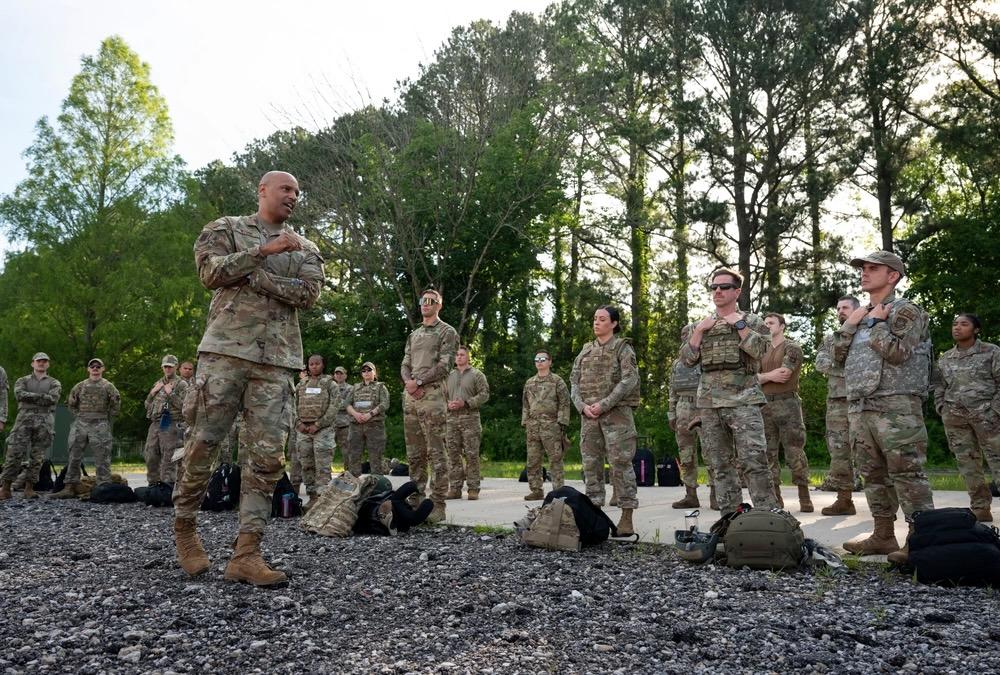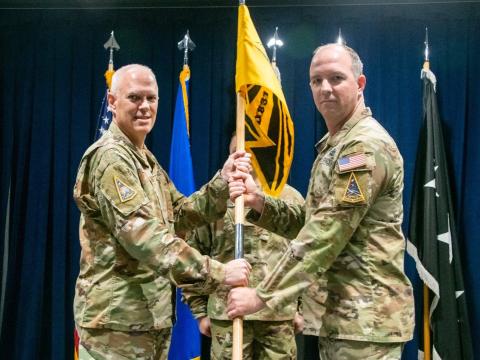Air Force Enables ‘Responsible’ Experimenting With Generative AI
U.S. airmen now can experiment with generative artificial intelligence (AI) on a larger scale, Department of the Air Force (DAF) officials announced June 10 in a statement and during a briefing with reporters at the Pentagon.
Led by the DAF Chief Information Officer (CIO), Venice Goodwine, other DAF officials and researchers from the Air Force Research Laboratory (AFRL), the Air Force is providing the so-called NIPRGPT platform “to provide Airmen, Guardians, civilian employees and contractors the ability to responsibly experiment with generative AI, with adequate safeguards in place,” the DAF announced in a statement.
The NIPRGPT platform will reside on the nonclassified Internet Protocol Router Network (NIPRNet). In addition to the NIRPNET’s protections, safeguards for the generative AI platform were also developed with the U.S. Office of Personnel Management AI guidelines in mind.
The platform will allow for the responsible use of natural language models and other generative AI tools, emphasized Lynne Graves, chief of the Artificial Intelligence Division, DAF.
The other emphasis beyond security is to allow experimentation. With the sudden rise in generative AI over the last two years, Air Force officials wanted to provide room for trial and error in a safe way, with warfighters able to play and experiment. The department can only image the scores of possible use cases that might be developed.
“I truly believe the greatest contributions that integrators can make is to create other innovators,” DAF Acting Chief Data and Artificial Intelligence Officer (CDAO), Chandra Donelson, said Monday during a briefing with reporters at the Pentagon. “And to see what the Airmen and Guardians have done here with the NIPRGPT capability is phenomenal.”
The research performed by AFRL and the DAF to develop the platform, as well as the feedback from the coming users of NIPRGPT, will help shape future DAF actions around generative AI, officials explained.
“We are not committing to any single model or technology or vendor,” Donelson stated. “It is too early in the process. However, we are leveraging this effort to inform future policy, acquisition and investment decisions.”
The officials have already conducted three-related innovation roundtables with stakeholders, and they foresee continued engagement.
“As we continue to integrate AI, we want industry, large and small businesses, and academia to provide us insights on model benchmarking, training, as well as future investments,” Donelson noted. “As leaders, we must be able to articulate the transformation that AI or any solutions can bring to our organization. But as technology leaders, we have a responsibility to ensure that the models are fit for the purpose. So, we aim to partner with the best minds from government, industry and academia to identify which models perform better for our specific tasks and in our domains, as well as use cases to meet the needs of tomorrow's warfighters.”
To start, the officials see the generative AI platform allowing users to query the AI tools to help complete tasks such as correspondence, background papers and coding.
To this end, the DAF will also provide training generative AI training. And while many warfighters can easily pick up these skills, the DAF wants to deliver intentional training that is fit for purpose and culture.
“Our recent GenAI Roundtables with industry and academia have shown us this is an actively growing field,” Goodwine, the DAF CIO, said in the statement. “And now is the time to give our Airmen and Guardians the flexibility to develop the necessary skills in parallel. There are multiple modernization efforts going on right now across the federal government and within the DAF to get tools in the hands of the workforce. This tool is another one of those efforts.”

Now is the time to give our Airmen and Guardians the flexibility to develop the necessary skills in parallel.
In addition, the DAF will continue to examine appropriate generative AL solutions from industry, department officials stated. “DAF senior leaders are focused on maximizing competitive advantage, recognizing that Airmen and Guardians need advanced technologies at the speed of relevance.”
The genesis of NIPRGPT is from AFRL’s Dark Saber software platform developed by the lab’s Information Directorate in Rome, New York, explained AFRL’s Collen Roller.
“Dark Saber is an ecosystem of Airmen and Guardians from across the DAF that brings together innovators and developers and equips them to create next-generation software and operational capabilities deployable to the Force at a rapid pace,” the DAF stated.
"NIPRGPT is a critical bridge to ensure we get the best tools we have into our team's hands while larger commercial tools are navigating our intense security parameters and other processes,” said Alexis Bonnell, AFRL CIO. “Changing how we interact with unstructured knowledge is not instant perfection; we each must learn to use the tools, query, and get the best results. NIPRGPT will allow Airmen and Guardians to explore and build skills and familiarity as more powerful tools become available."
In February, Vice Chief of the Air Force, James Slife, spoke of the service’s great demand for artificial intelligence and data management improvements to aid its operations and future capabilities.
The allowed experimentation and the arrival of NIPRGPT is one step closer to bringing AI into operations and day-to-day tasks, officials said.
Interested parties, including civilian and uniformed Airmen and Guardians, as well as contractors who are CAC holders, can register for NIPRGPT access here: https://niprgpt.mil





Comments